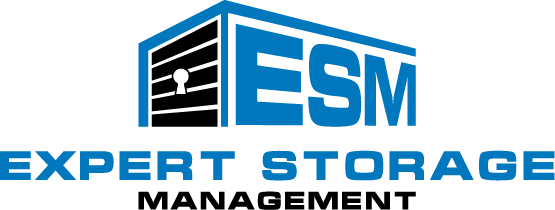Every self-storage business should maintain a basic policies and procedures manual that outlines everyday operation. Here’s insight on how to write a solid guide and what it should include.
Imagine this nightmare: You own a successful and profitable self-storage facility. Thanks to the exceptional manager you hired, you've never experienced a major headache or problem. One morning, however, you receive a call from a tenant demanding to know why your facility isn’t open. You soon learn your manager has been in a car accident and can’t make it to work. You try not to panic, but you've never spent a full day in the office. You don’t even remember where you put the key to the front door or the code for the security system. What do you do?
Some variation of this scenario has played out many times in our industry at facilities all over the world. Don't let it happen to you.
At a minimum, every storage operation should maintain a basic policies and procedures manual that outlines day-to-day operation. It can be invaluable every day, but most particularly in an emergency. If you don't have a manual, you need to create one. In fact, you need at least two copies: one to keep in your management office, and one for yourself.
Why You Need a Manual
Imagine you've just purchased an amazing, state-of-the-art TV with every bell and whistle imaginable. You open the box and discover your new marvel has no owner's manual of any kind. Unless you’re technically savvy, you're not going to get the most from your purchase. You may not even be able to turn it on.
That new TV represents an investment of less than $5,000. Your storage facility, on the other hand, could be worth millions. Think of a policies and procedures guide as the indispensable owner's manual for your facility.
In the worst of times, a thorough, well-written manual will go a long way toward protecting your business. In the best of times, it’ll keep your facility on track, protect your interests, and provide a source of continuity when a manager resigns or must be replaced.
Writing the Manual
In its simplest form, your policies and procedures manual should be a practical, step-by-step guide to the daily operation of your storage facility. Every guide will be different, of course, because no two properties are the same.
In general, start with a brief introduction to the industry, and then dive into specifics. Whatever you do, solicit input from your manager. In fact, your best bet is to have him write the first draft! Don’t worry, you can easily guide things along and make any modifications you feel necessary. Just remember that your staff is the best source for understanding the nuts and bolts operation of your site.
At a minimum, every manual should cover:
- Opening and closing procedures
- Renting a storage unit
- Vacating a storage unit
- Unit transfers
- Emergency protocol
- Contact information
- Reporting processes
- Maintenance procedures
- Dress code
- Basic marketing
- Employee benefits
- Holidays
Important note: Never list potentially sensitive information in any copy of your manual that will be stored digitally. Doing so leaves your facility open to cyber-attack. I’ve heard horror stories of managers leaving lists of bank accounts, passwords, etc., on a facility’s computer only to have the information stolen by hackers.
Make a Daily Checklist
Creating a checklist that must be filled out every day can be vital to your facility’s long-term success. This list should always be kept in the same place and filled out daily by the manager(s) on duty. If you have more than one employee, the checklist is also a good place for your team to communicate important information to one another. One of the most stringent requirements in facilities I oversee is completion of this form. I feel so strongly about it that repeated failure can lead to disciplinary action.
Some items to include are:
- Picking up any trash or debris
- Cleaning the restroom(s)
- Removing or placing overlocks on delinquent units
- Processing invoices
- Following up on leads
- Checking unit locks
- Cleaning vacant units
- Conducting unit inventories
- Checking units rented and/or vacated for the day
- Closing out management software for the day
- Completing bank deposits
- Share Facility Amenities
An Unexpected Advantage
While writing your manual, you may find yourself recognizing hidden flaws in your operation. For example, your manager might be perfectly comfortable flying by the seat of his pants—and even find it empowering—but the potential for disaster is enormous. It’s possible, however, to create the same calm, relaxed and even fun atmosphere within a set of practical rules, especially when the manager participates in writing the guide. In fact, having a clear set of rules can significantly lower a manager’s stress level.
Accountability
Many facilities do have policies and procedures in place, but they’re routinely ignored by employees. The situation in which rules are broken but no one is held accountable is even worse than having no rules at all! Every employee should be made aware that these rules aren’t meant to be broken, and there will be consequences if they’re disregarded. To promote this understanding, your procedures should include a quarterly audit, which may be conducted and acted upon either by you or an independent third party.
A Living Document
Keep in mind your manual should be a living document. Times change. Have your manager keep a digital copy on the facility computer—sans sensitive information, of course—and submit changes or additions for your approval. It’s also important to remember that policies relating to human resources should be in line with your state’s employment laws. It’s a good idea to have a legal professional review anything applicable.
If your facility doesn’t already have a working policies and procedures manual, take some time from your busy schedule to work with your manager and put one together. Doing so will place you in a much better position if you ever face an unexpected crisis.
Contact Sean more information.
Sean Landry
Sean Landry is owner and president of Expert Storage Management LLC, which offers third-party management services for self-storage, including staff hiring and training, revenue management, pricing, unit-mix optimization, marketing strategies, and more. He founded the company in 2016 after a successful career as a facility manager and consultant.


